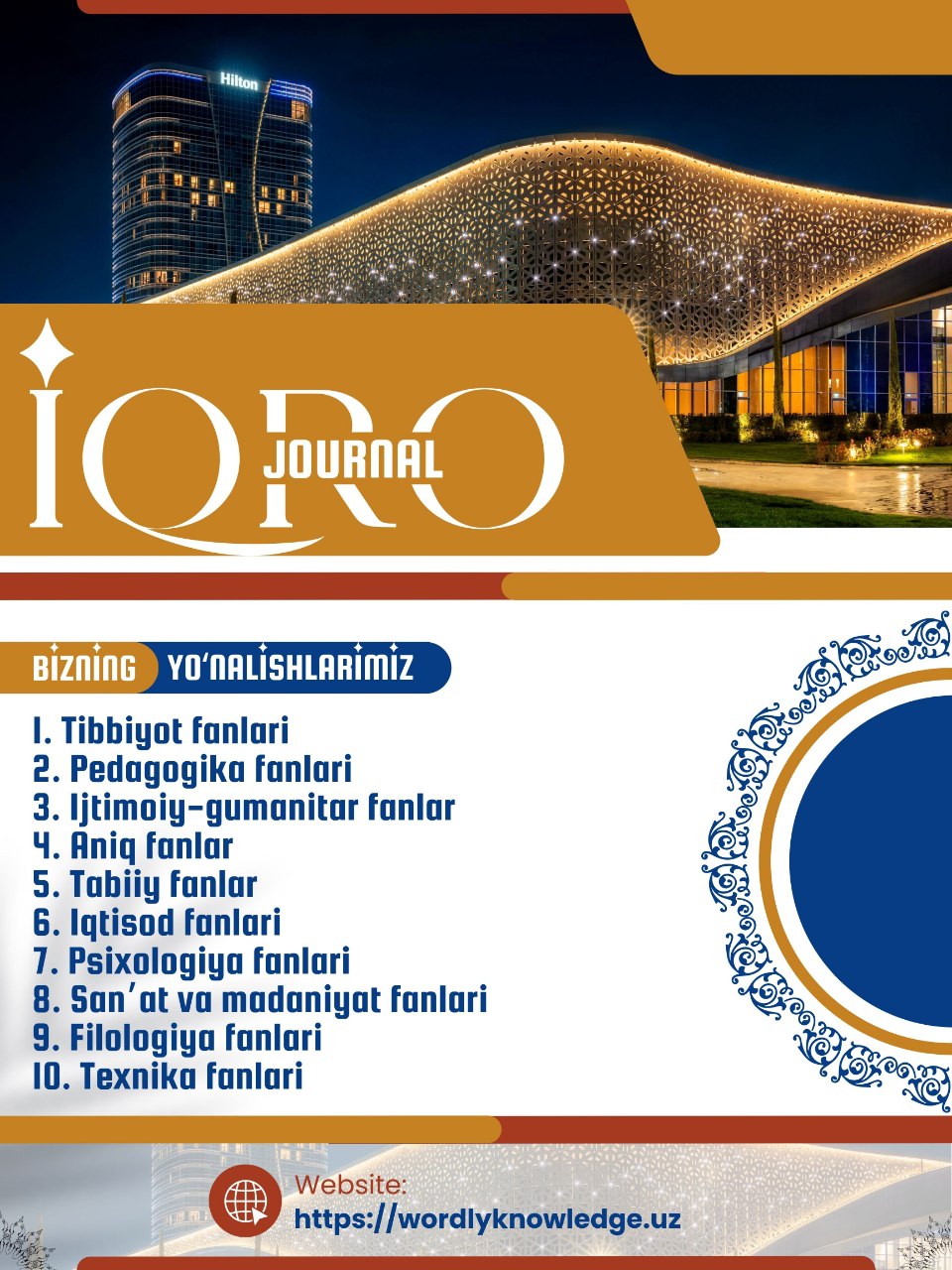INNOVATIVE METHODS FOR ACCURATE DETERMINATION OF THE CAUSES OF DEATH
Central Asian Medical University "Review by PhD Nasirdinov Mavlonjon from the Department of Fundamentals of Pathology and Forensic Medicine"
Keywords:
Forensic pathology, virtual autopsy, post-mortem analysis, biochemical markers, artificial intelligence, genetic profiling, cause of death, forensic science, post-mortem interval (PMI), forensic toxicology.Abstract
This article explores innovative methods for accurately determining the causes of death, highlighting advancements in forensic pathology. Traditional autopsy techniques, while effective, have limitations such as invasiveness and subjectivity. The study reviews emerging approaches, including virtual autopsy using CT and MRI, biochemical markers for post-mortem analysis, AI-driven forensic investigations, and genetic profiling. These modern technologies enhance precision, improve non-invasive diagnostics, and contribute to more reliable forensic examinations. Despite challenges such as standardization and ethical concerns, integrating these innovations into forensic practice has the potential to revolutionize cause-of-death determination.
References
1.DiMaio, V. J. (2001). Forensic Pathology, Second Edition. CRC Press.
2.Thali, M. J., Viner, M. D., & Bolliger, S. A. (2009). The Virtopsy Approach: 3D Optical and Radiological Scanning and Reconstruction in Forensic Medicine. CRC Press.
3.Madea, B. (2015). Estimation of the Time Since Death. CRC Press.
4.Işcan, M. Y., & Loth, S. R. (2001). The Forensic Anthropology Laboratory. Charles C. Thomas.
5.Jackowski, C., Schwendener, N., Grabherr, S., & Persson, A. (2011). Post-mortem radiology of forensic gunshot wound documentation. Forensic Science International, 301(3), 318-325.
6.Rutty, G. N., Brough, A., Biggs, M. J., Robinson, C., Lawes, S. D. A., & Hainsworth, S. V. (2013). The role of micro-computed tomography in forensic investigations. Forensic Science, Medicine, and Pathology, 9(2), 183-192.
7.Takatsu, A., Terazawa, K., & Shiono, H. (2012). Molecular autopsy: Biochemical and molecular studies on sudden unexplained death. Legal Medicine, 14(3), 151-156.
8.Pechal, J. L., Crippen, T. L., Tarone, A. M., Lewis, A. J., & Benbow, M. E. (2014). Microbial community functional change during vertebrate carrion decomposition. PLoS ONE, 9(6), e99957.
9.Datta, P., & Saha, A. (2020). Artificial intelligence in forensic pathology: Current applications and future perspectives. Journal of Forensic Science & Criminology, 8(2), 45-57.
10.Carter, D. O., & Tomberlin, J. K. (2021). Forensic entomology and microbial interactions in postmortem investigations. Annual Review of Entomology, 66, 327-346.














